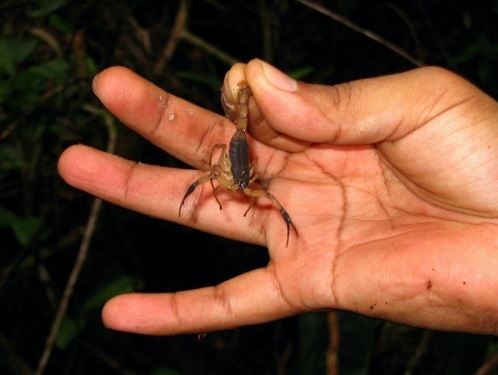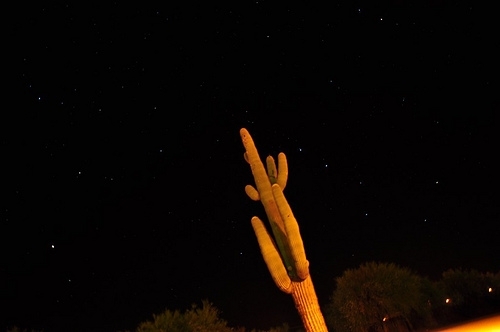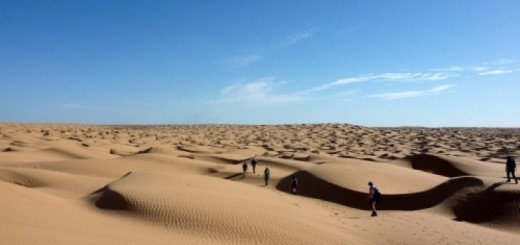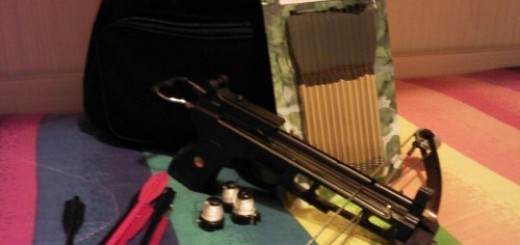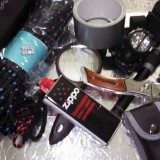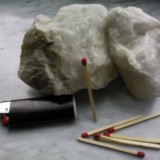HOW TO SURVIVE IN A HOT DESERT
HOW TO SURVIVE IN A HOSTILE PLACE AS THE DESERT
Rules and basics for survival in a hot desert.
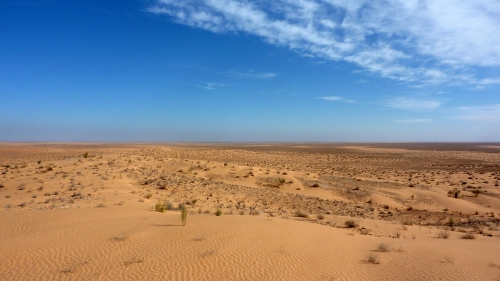
Temperatures in the desert can reach values from 55°C to 60°C (131°F to 140°F) in the shade, while at ground level the sand can get up to 80°C (176°F). When walking in the desert, the heat coming from below, that is felt is indescribable. In a normal day in the desert temperatures are suffocating; around an average of 45°C – 50°C (113°F – 122°F ). At these temperatures the death occurs mainly by heat stroke (sun stroke) and for dehydration. Both conditions occur very quickly, so if you want to survive in the desert the ideal solution is to move as little as possible and don’t make efforts, you must find a place in the shade to shelter from the scorching sun and wait for rescue.
Example of shelter in the desert with tarp elevated and air cavity:
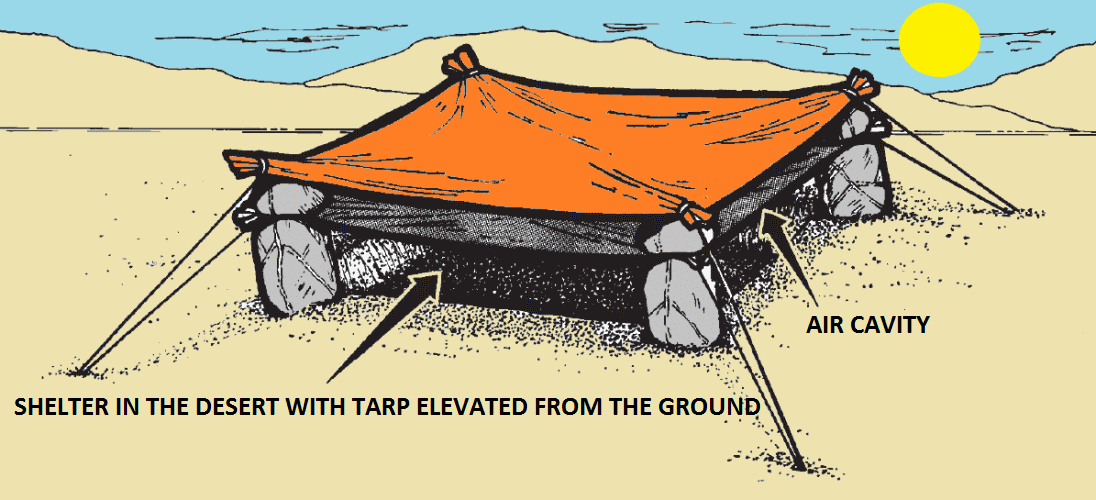
- If you are on board of a vehicle failure, it is advisable to wait inside the vehicle, in this way there will be more possibilities to be seen, to escape the sun and to survive.
- But if you aren’t sure that help will arrive, it is advisable to march only in the early morning (from 4.00 to 10.00) and in the late afternoon or evening (from 17.00 to 22.00), when temperatures are less fiery.
- Hardly you can found a river in the desert, but if you see a dry river follow you might reach a real river, and finally find civilization.
- If you are in a rocky desert you can take advantage of the shadow cast by a rock formation.
- For example you can find a bit of shade and relief in the bottom of a canyon, and if you are lucky even water; in fact, at the foot of a canyon sometimes you can sight some stream that brings water to some small river.
VERY IMPORTANT:
- Always cover the head and the neck to keep the brain shaded and avoid sunstroke.
- If you don’t have a hat use any cloth or piece of cloth (also torn from their clothes), preferably white or light, dark colors (black especially) capture more sunlight and warm up first.
Desert Cap in photo
- To escape sunburns you need to cover your entire body without leaving areas of skin exposed to sunlight.
- If the heat becomes unbearable on the head, you can urinate on the cap.
- It’s important to stop frequently to remove the sand from shoes, especially if the sand is hot or if there are small stones inside. This for don’t ruin your only means of moving: the feet!
ORIENTATION IN THE DESERT:
- The absence of any objects such as trees, buildings, light poles etc … makes very difficult any distance measurement. In fact, as in the sea, you have to multiply each distance for three times.
- In a sandy desert, the dunes are constantly changing due to the wind, so you must never take them as a reference point.
- When you find green areas in the desert you can certainly find water and food, and probably also human settlements.
- In America there are Cactus on which you can rely for the orientation. So-called “cactus bushes” always tend to grow oriented to the southwest.
USEFUL INFORMATION:
- The internal temperature of the human body is about 37°C (97,7°F), when it reaches 40.5 (105°F) you have heat stroke, the brain enters into confusion and the body is convulsed, in these conditions you may risk the coma.
- If, when you urinate, the urine is very dark it means that the body is dehydrated.
- If you want shelter from sun in shady areas, you should always check that there are no snakes or other poisonous animals (during the hottest hours, they seek relief in the shade).
- To check if there are animals you just throw some stones in the affected area and find if there are movements. For example snakes hate the strong vibrations and does not take much to put them on the run.
-
Sunrise is the perfect time to move through the desert (the cold of the night will also cooled the ground).
- When you wake up it’s always advisable to check: footwear, clothing and equipment, because scorpions love to hide in shady places and fresh.
-
If a scorpion walks above you, there is only one way to grab it. You have to be fast and grab it by the tail controlling the stinger.
-
The end of the tail of the scorpion is composed of tiny hairs that detect even the slightest movement in the surrounding air. However, the sting is his only weapon, once neutralized the arthropod becomes harmless.
Scorpion
THE NIGHT IN THE DESERT:
- Due to of the strong thermal excursion, that distinguishes these areas, the nights in the desert are very cold.
- The night temperatures can reach 0°C (32°F), it’s necessary to start a fire, in order to heat and keep out predators, before it becomes dark.
- The temperature difference between day and night can be even 40°C (104°F).
- In the night you need to wear other clothing and cover your body as much as possible.
- If the internal temperature is lowered, in a short time, under 35°C (95°F) you risk hypothermia.
FIRE:
- In any survival situation start a fire always been a great psychological help.
- To light a fire you can use brushwood, branches and dried plants.
- If you don’t have a lighter, a match, a flint or a fire striker, you can use an eyeglass lens, a clock face, the bottom of a bottle, a piece of glass, or anything that can concentrate the sun’s rays on the bait. If you find wood and a piece of rope you can improvise a bow drill.
WATER:
- With the desert temperatures, the human body loses through sweating about 1 liter of water per hour, even without making great efforts.
- Plants need water to survive, so any signs of vegetation can make you understand that water could be nearby.
- If an Asian desert you can see a salt cedar (Tamarix) might be useful to know that this plant needs a lot of water to survive, so near you could find an aquifer or some water. Same goes for the cypress.
- Be careful if you find large puddles of water at the base of canyons or of rock formations, may be contaminated, because are stagnant (maybe it accumulated during the last rains and stagnate there for months). You can check with a stick and see if there are dead animals in the water, if you find them this confirms the theory that water is decomposed and is not drinkable.
- Drinking contaminated water may cause dysentery, or worse a gastrointestinal problem. Similar problems in the desert will kill you, in that would lead to the immediate dehydration.
- Remember… bees and mosquitoes always live near sources of water, if you encountered some, follow their direction.
- When you are dehydrated, you have to drink slowly and in small sips because ingesting too much water and very rapidly can cause vomiting, further dehydrated you. If fortunately you find a river or lake, beware of the quicksand! Before diving check the consistency of the ground with a stick.
- When you fall into quicksand, more you move and shake, more you go under. If you try to pull off the legs pushing up, the effect that you will get will be pulled more and more towards the bottom. The only way out is to stop struggling and groped to raise your body slowly upward, then you must try to reach the surface by changing the inclination of the body, pulling on with arms and then with legs trying to reach the horizontal position and then drag slowly the body to the surface parallel to the ground.
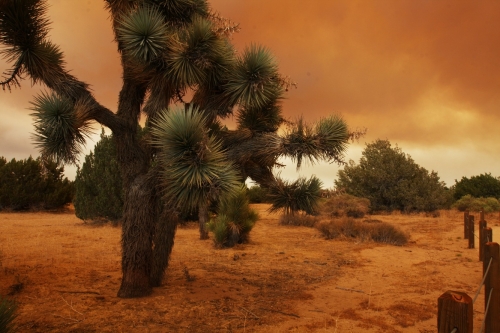 FOOD:
FOOD:
- The food in the desert is very poor, sometimes you can see animals like rabbits, lizards, rats, prairie dogs, snakes. it is easier to find them near water sources or hidden in the bushes.
- Some plants are edible and can be eaten fruits, seeds, flowers, shoots and bark.
- In a rocky desert, in the cracks of the highest rocks you can be found nests of birds and eggs.
- Find shells of eggs, droppings of birds and feathers indicate the presence of birds and the location of a nest nearby.
- If you find an egg, check it for holes and then eat it, you can also ingest the egg shell that is very rich in calcium. It’s advisable to cook it and not eat it raw because you could get salmonella.
- Cook an egg in the desert is very simple, the ground temperature can reach 80°C (176°F), if you find a rock or a stone, surely will be scorching, hatch the egg above it, it will ready in an instant.
- The dusk is the perfect time to go hunting. The snakes are nocturnal predators and at sunset they leave their fresh shelters to look for some prey.
- To capture a snake you can strike his head with a rock to stun it, when he’s unconscious, you approach quickly and with a stick you hold him just below the head, then with a large stone you smash his skull.

